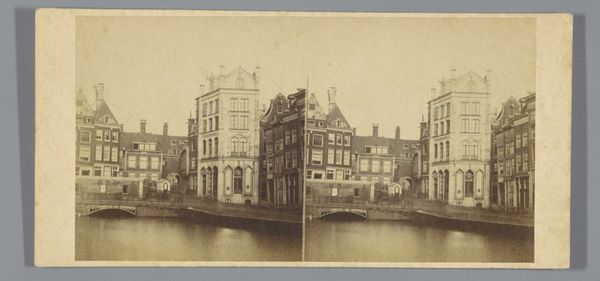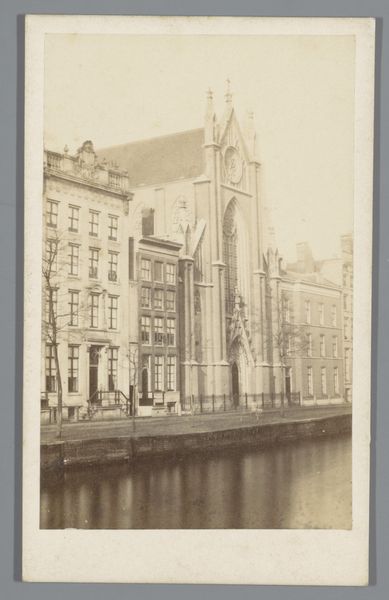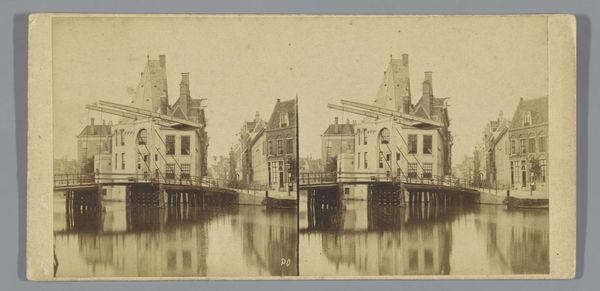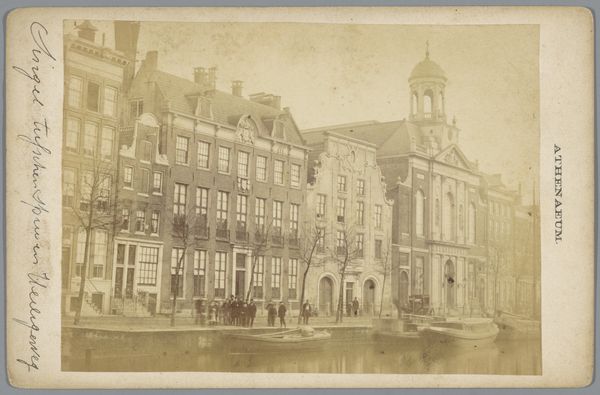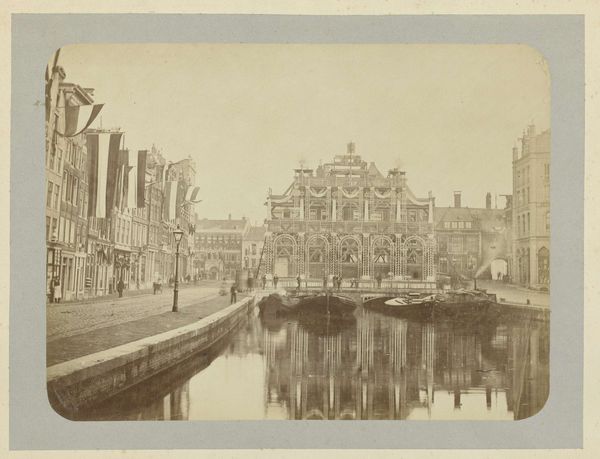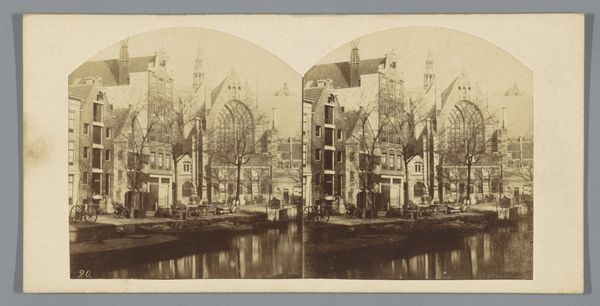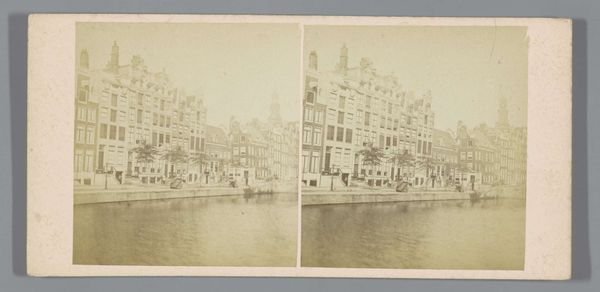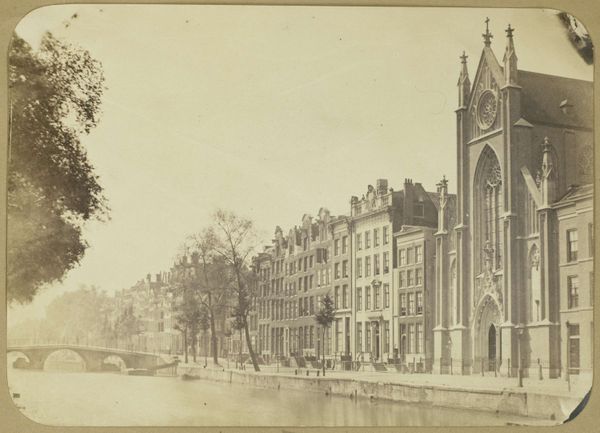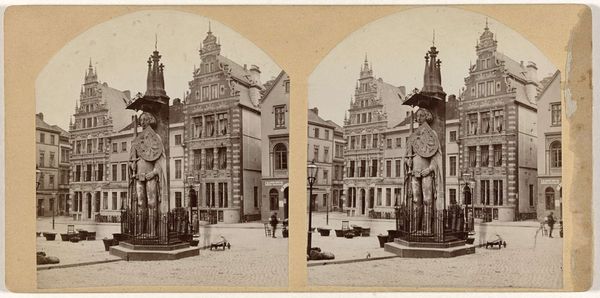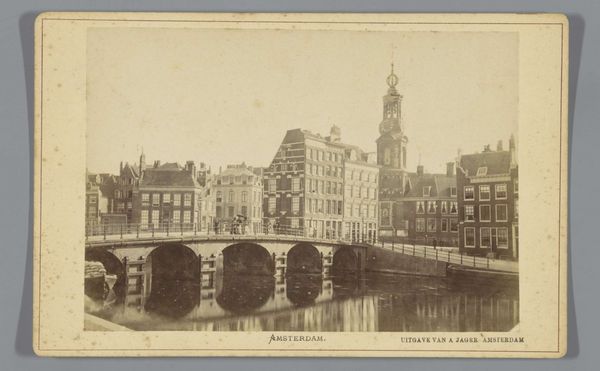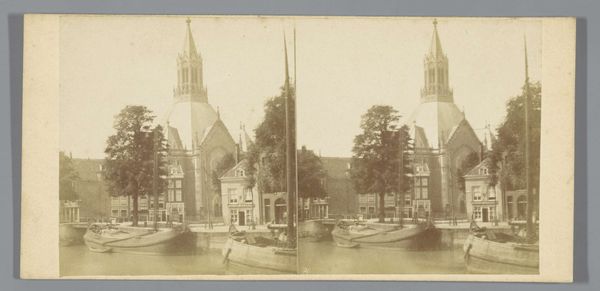
Dimensions: height 84 mm, width 174 mm
Copyright: Rijks Museum: Open Domain
Curator: Alright, let's talk about Pieter Oosterhuis' gelatin silver print from 1859, “Keizersgracht en Onze-Lieve-Vrouwekerk, Amsterdam.” This image, held at the Rijksmuseum, captures a tranquil Amsterdam cityscape. What strikes you initially? Editor: The stillness. There's a serene quality about the image, despite the urban subject matter. The water's reflection is so placid, and the tones, even with the slight sepia, feel incredibly balanced. Almost dreamlike, really. Curator: Dreamlike, yes, and yet so carefully constructed. Oosterhuis wasn't just pointing and shooting. He was arranging elements – the positioning of the church, the angles of the houses. He really crafted an ideal of urban life. That church, though. Dominating the skyline even then... it suggests a silent guardian over the whole scene. Editor: Absolutely, the church functions almost as a mother archetype. The architectural lines point skyward, symbolizing aspiration, but the solid foundation mirrors back to earthly stability. It’s a visual reassurance, isn’t it? I imagine it gave viewers of the time, a burgeoning industrial age, a sense of timelessness, connection to what they were before things changed forever. Curator: Exactly. Photography itself was new, but by documenting an old-world sense of order, there's this beautiful conversation between progress and tradition, new and old. Do you notice the almost geometric pattern created by the windows? Editor: I do! They’re like little watchful eyes along the canal. The photographer almost wants you to view it not just as the street but also like some enormous animal that seems both comforting and aware. So this balance is again playing that comforting factor you suggested before, Curator: Right? There is much that the symbols seem to have created; a space where progress and heritage coexist—almost holding hands! Now that you mention animal instincts I can see almost a nurturing effect that even Oosterhuis maybe hadn't thought of when creating the scene. Editor: Well, the eye often sees more with the distance that time gives us. This silver gelatin offers a tangible connection to the soul of a bygone Amsterdam and perhaps, unconsciously, makes viewers more at home. Curator: What a profound point. So maybe it continues its legacy even now. I love thinking about this—our little snapshot offering so much context of a society and place. Editor: Indeed, thank you. This photo almost speaks more through the imagery used, now when I'm saying goodbye I imagine what messages are being passed over with time.
Comments
No comments
Be the first to comment and join the conversation on the ultimate creative platform.
